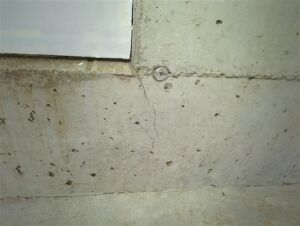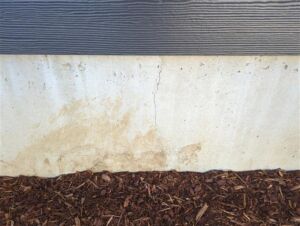
Finding a crack in your home’s concrete can be unsettling, but it’s important to understand that not all cracks are cause for alarm. Concrete is a material that naturally expands and contracts due to different environmental and structural factors. Small surface cracks, which can occur during the curing process or as a result of minor shrinkage, are usually harmless and don’t compromise the integrity of your home. These cracks can typically be easily addressed and repaired without significant expenses or extensive efforts.
Concrete can develop surface cracks or shrinkage under different circumstances. One cause is drying shrinkage, which occurs when moisture evaporates during the curing and drying process. As the water content in the concrete decreases, the concrete shrinks, resulting in superficial cracks on the surface. Another cause is thermal shrinkage, triggered by temperature fluctuations. When concrete goes through high heat exposure during curing and then cools rapidly, it contracts and forms cracks. Lastly, chemical reactions within the concrete can lead to autogenous shrinkage – although this type of shrinkage is less common.

In scenarios where cracks suddenly widen or display rapid growth, or when multiple cracks intersect or form discernible patterns, seeking professional evaluation is the recommended course of action. These situations call for a closer examination by structural engineers or construction experts. Moreover, if the cracks emerge in critical load-bearing areas of the home, professional assessment is important to ensure the safety and stability of the home.
Although shrinkage cracks can occur as part of the natural concrete curing process, it is important to take steps to prevent them as much as possible. One key step is ensuring proper mix design, which involves finding the right balance of cement, water, aggregates, and admixtures. Proper placement and design of control joints are crucial in preventing random and uncontrolled cracking. A well-thought-out jointing system can effectively guide the location of cracks, ensuring more controlled and predictable outcomes.
In case shrinkage cracks do manifest, remedies are available to address the issue effectively. Crack filling and sealing involve injecting epoxy or specialized materials into the cracks to restore structural integrity and prevent further damage. Epoxy injection is a popular method that not only seals the cracks but also reinforces the affected concrete. The severity and impact of a concrete crack determine the decision to repair it. Assessing each crack individually is crucial, taking into account factors such as safety, aesthetics, functionality, and structural integrity. When uncertainty arises, seeking professional advice is always wise to ensure the right course of action.
To summarize, although normal concrete shrinkage cracks are a natural part of the curing process and may not require immediate repairs, it is important to continuously monitor them. Employing effective monitoring techniques and seeking professional help when necessary will ensure that these cracks do not become more serious issues. By properly monitoring your home, you can ensure its long-term safety and stability.
